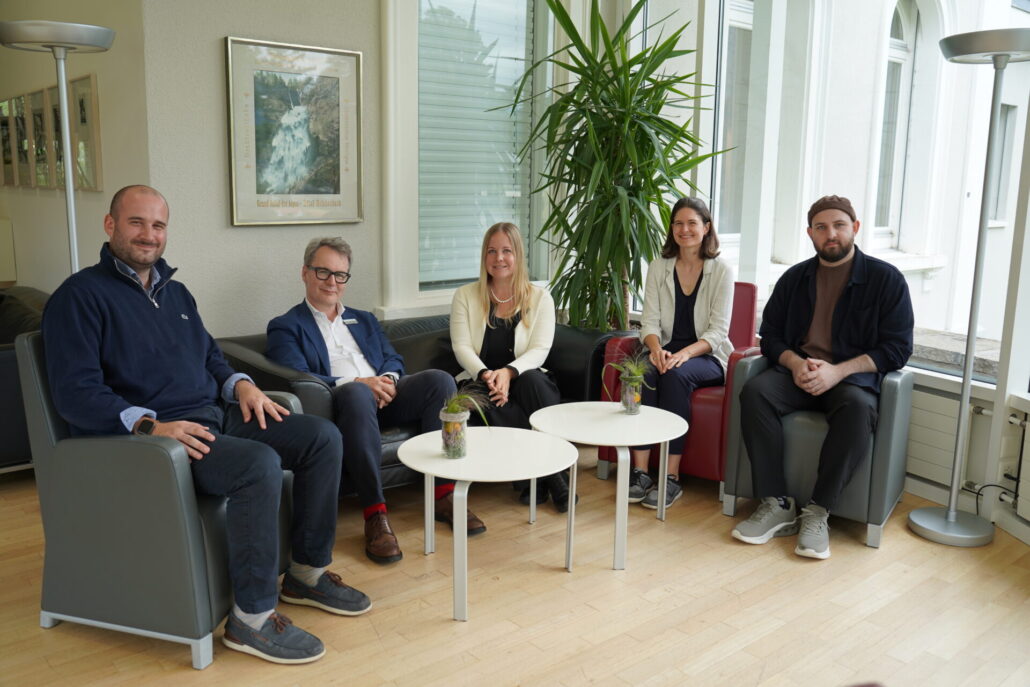Project MentalWords: Efficient collection of text data in a clinical environment and linguistic analyses
The MentalWordsproject is investigating what happens to linguistic expression when someone is affected by mental health problems. But first of all, it needs data.
Important questions, less data
Natural language processing (NLP) is increasingly being used to better understand mental health. This involves automatically analysing texts such as forum posts or conversation transcripts in order to identify indications of moods, stress or clinically relevant symptoms. Such methods can support doctors and therapists by providing additional information or revealing patterns that are difficult to recognise with the naked eye. The long-term aim is to help patients earlier and in a more targeted manner.
However, a major problem in this area of research is the lack of suitable data. Clinical data in particular, i.e. speech or text samples from real patients undergoing treatment, are rarely accessible as they are strictly confidential and sensitive. Researchers therefore often have to rely on public sources such as social media, which are not always reliable or representative. Few studies have direct access to real clinical data, which makes the development and testing of models considerably more difficult. A review study showed that social media data was used in over 80% of studies [1].
Promising initial approaches
The team at BFH has already addressed the issue in previous work: for example, how text analysis can be used to recognise the first signs of burnout. To this end, the research team analysed anonymous posts by people talking about their experiences online [2] and collected anonymous texts using a survey [3]. The aim was to find patterns in the language that could indicate particular stress or exhaustion.
The study has already shown initial positive results: The developed method [2] recognises burnout clues in texts quite reliably. However, it should be noted that these results still need to be further verified, especially with clinical data and in practical fields of application.
The MentalWords project
The MentalWords project is now taking up this thread. In close co-operation between the BFH School of Engineering and Computer Science and the BFH School of Health Professions, it is being carried out together with the University of Bern (University Psychiatric Services Bern) and the clinical partner Privatklinik Meiringen. The aim of the project is to develop innovative approaches in the field of computational linguistics in psychiatry and to test them in practice. The project will run for four years and is funded by the Swiss National Science Foundation.
The focus is on the development of a data collection protocol that can be integrated as smoothly as possible into the clinical workflow in order to minimise the effort for the clinical partner in interdisciplinary research collaborations in the long term. The transcribed data will then be analysed to explore differences in written expression between patients with burnout, depression, anxiety and a healthy control group. The aim is to combine scientific findings from different disciplines with clinical expertise in order to create concrete insights for the psychiatry of the future.
An interdisciplinary and translational team
An interdisciplinary and translational team is very relevant for such a project. The project team is made up of experts from the fields of health sciences, medicine and computer science/computational linguistics and is working on the implementation in an interdisciplinary manner. The project is led by Prof. Dr Mascha Kurpicz-Briki from the Applied Machine Intelligence research group at the School of Engineering and Computer Science, together with Prof. Dr Thomas J. Müller from the University of Bern (University Psychiatric Services Bern) and the Privatklinik Meiringen, in close collaboration with Prof. Dr Christoph Golz from the BFH School of Health Professions. The two research groups have already worked together successfully on various other projects.

Science communication involved
The Institute of Design Research at Bern University of the Arts (HKB) is also supporting the project in communicating the research. The project objectives are to be explained in a way that is understandable to a wide audience in order to achieve a broad impact.
Project website:
https://www.bfh.ch/de/forschung/forschungsprojekte/2025-790-622-342/
References
[1] Zhang, T., Schoene, A. M., Ji, S., & Ananiadou, S. (2022). Natural language processing applied to mental illness detection: a narrative review. NPJ digital medicine, 5(1), 46. https://www.nature.com/articles/s41746-022-00589-7.pdf
[2] Merhbene, G., Nath, S., Puttick, A. R., & Kurpicz-Briki, M. (2022). BurnoutEnsemble: augmented intelligence to detect indications for burnout in clinical psychology. Frontiers in big Data, 5, 863100.
[3]Kurpicz-Briki, M., Merhbene, G., Puttick, A., Souissi, S. B., Bieri, J., Müller, T. J., & Golz, C. (2024). Using Natural Language Processing to find Indication for Burnout with Text Classification: From Online Data to Real-World Data. arXiv preprint arXiv:2409.14357.
 Create PDF
Create PDF

 Contributions as RSS
Contributions as RSS Comments as RSS
Comments as RSS
Leave a Reply
Want to join the discussion?Feel free to contribute!